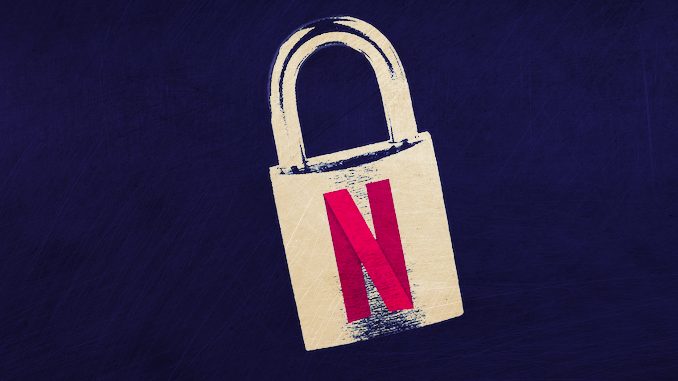
Netflix is once again disrupting the entertainment industry by announcing it will no longer regularly report its subscriber numbers. This move further undermines Netflix’s data transparency deficiencies and attempts to divert investor attention from stagnating subscriber growth to revenue and profit metrics.
In an increasingly crowded streaming market, Netflix’s decision follows a successful year of growth, driven by a contentious crackdown on password sharing that added nearly 30 million subscribers in 2023. However, this strategy may signal challenges in sustaining such growth in an increasingly saturated market.
Will Hollywood Imitate Netflix’s Reporting Decision?
While Netflix’s unique market position allows it to make this shift, it’s not necessarily a strategy that its competitors should adopt. Netflix’s subscriber numbers have historically been a significant factor in its stock valuation. By shifting the focus to financial metrics, Netflix aims to prevent future investor panic if subscriber growth slows. However, traditional media companies like Disney+ and Warner Bros. Discovery (WBD) are still under intense pressure to demonstrate growth in their streaming services.
Subscriber numbers remain critical for these companies as they upend their long-time business models to transition into a competitive streaming market. Disney+, for instance, added over 11 million subscribers in the last quarter of 2023, while WBD’s Max continues to expand its global footprint.
Netflix’s decision to stop disclosing subscriber numbers could set a troubling precedent followed by all major streaming platforms. However, this strategy may not be suitable for all industry players, as traditional media companies still depend heavily on demonstrating subscriber growth to validate their transition from linear TV to streaming.
The pressure to show tangible growth metrics remains crucial as these companies struggle to convince investors of their long-term viability in an increasingly saturated streaming market. This shift by Netflix might obscure underlying challenges and risks in maintaining subscriber momentum, which other companies cannot afford to ignore.
Netflix’s 2023 data release underscores the stark contrasts in viewership across its offerings. While some high-profile original productions failed to capture audiences, many licensed titles succeeded remarkably. This variability highlights the unpredictable nature of streaming viewership and the ongoing challenge of retaining audience engagement as subscribers rotate from service to service in search of harder-to-find content worth watching.
The Potential of Ad-Supported Streaming
Netflix’s ad-supported tier has quickly gained traction, becoming the second most popular subscription plan in the U.S. Netflix announced that its ad-supported streaming plans attracted 9.3 million new customers, nearly double the market consensus. This surge brought its global total to 269.6 million subscribers by the end of March. As of Q1 2024, it accounts for 27% of Netflix’s U.S. subscribers.
This rapid growth illustrates the potential of ad-supported models to attract price-sensitive users and generate additional revenue streams. The success of this tier also suggests a pathway for other streamers to diversify their offerings and stabilize revenue.
Netflix Opens Doors to External Licensing
As an exclusive platform, Netflix’s management currently opposes licensing content externally, but the writing is on the wall for embracing external licensing of its films and shows.
Financially, navigating content licensing in multiple windows is critical for generating revenue from Netflix’s originals. That said, not all Netflix originals may be monetized in a new window, and some popular originals not outright owned by Netflix cannot be licensed. The company acknowledges that licensing isn’t currently considered a strategy, although it has previously denied claims regarding advertising before embracing ads. Furthermore, moving a Netflix original to another platform risks devaluing the content and brand, which could impact consumer perception.
At a more granular level, Netflix can begin licensing original series that have already concluded. In such cases, Netflix has already generated the majority of revenue from these titles, which might no longer significantly contribute to customer acquisition and retention. Also, early seasons of ongoing, long-running shows can be strategically licensed in non-exclusive deals to generate revenue and increase awareness and demand for upcoming seasons on Netflix.
As the major studios have realized, spending $100-200 million on films destined exclusively for crowded streaming services isn’t financially viable in the long run.
Traditional film release windows consist of several stages, including theatrical release, electronic sell-through (EST), DVD/VOD rental, Pay-1, Network, and Pay Two, offering several avenues for monetization over a film’s lifetime. This traditional windowing model highlights the revenue potential many streaming platforms forego by indefinitely retaining original films exclusively in-house, even after reaching peak customer acquisition and engagement value.
Get Instant Access to How Much Streamers Like Netflix, Max, Hulu, Amazon, and Paramount+ Pay to License Films and Shows Worldwide.
Worldwide Film & Television Distribution Intelligence
Get unparalleled access to market intelligence reports that draw on financial data and insights from dozens of content distribution deals worldwide between key industry participants, including — Distributors, Producers, MPVDs, and Streaming Exhibitors.

Film and Series distribution rates and terms deriving from dozens of agreements for rights to transmit films and episodic television via PayTV and SVOD.
Choose flexible options for single-user PDF downloads.
Licensing Terms & Included Programs:
Pay-1 & SVOD Rate Cards for Motion Pictures and Series Exhibited Worldwide in Multiple Availability Windows
- Motion Pictures: Pay-1, First Run, Second Window Features, Recent Library Features (Tiers AAA,A,B,C), Library Features (Tiers AAA,A,B,C), Current and Premium Made-For-TV Films and Direct-To-Video Films, covering many license periods over the last decade
- Episodic TV: Current, Premium, Premium Catalog (1HR & 1/2HR), Catalog Series (1HR & 1/2HR), and Catalog Miniseries + Case Studies on Current Mega Hit, Catalog Mega Hit, and Premium Catalog, covering many licensing terms from 2012-2024
- Because most-favored-nation rates operate in practice, the rates and terms apply to a diverse range of content and distributors worldwide in multiple availability windows.
Disney and Warner Bros. Announce Cross-Studio Bundle
Disney and WBD recently announced a rare cross-studio streaming bundle in a strategic reversal to retain fleeing subscribers. This new offering will merge Disney+ and Hulu with WBD’s Max, which features diverse content from the studio along with its premium service, HBO.
This partnership aims to attract new viewers with a comprehensive entertainment package and reduce subscriber churn for both companies. It represents the latest step in transforming isolated streaming services into a modern version of cable television.
The new bundle is expected to benefit WBD significantly more than Disney. The financial upside for WBD is substantial, as the bundle could attract a significant number of Disney+ and Hulu users.
This strategic partnership is a survival tactic in the face of declining revenues from traditional linear networks and mounting losses from streaming. Disney and WBD have reported modest direct-to-consumer profits, but the quest to make SVOD a consistently profitable business continues. The push for bundling clearly indicates legacy media’s efforts to recreate the lucrative cable model in the streaming era.
FilmTake Away: Lessons for a Changing Streaming Industry
Netflix’s recent business model reversals, including its ad-supported tier, a shift away from subscriber transparency, and possible exploration of external licensing of in-house titles, reflect an evolving landscape of slow growth. While these strategies may not be directly transferable to its competitors, they offer valuable insights into the future of streaming.
Legacy media companies must balance subscriber growth with revenue diversification to navigate this rapidly changing landscape. As the industry evolves, innovative approaches tailored to each company’s strengths and market position will be critical to sustainable success.